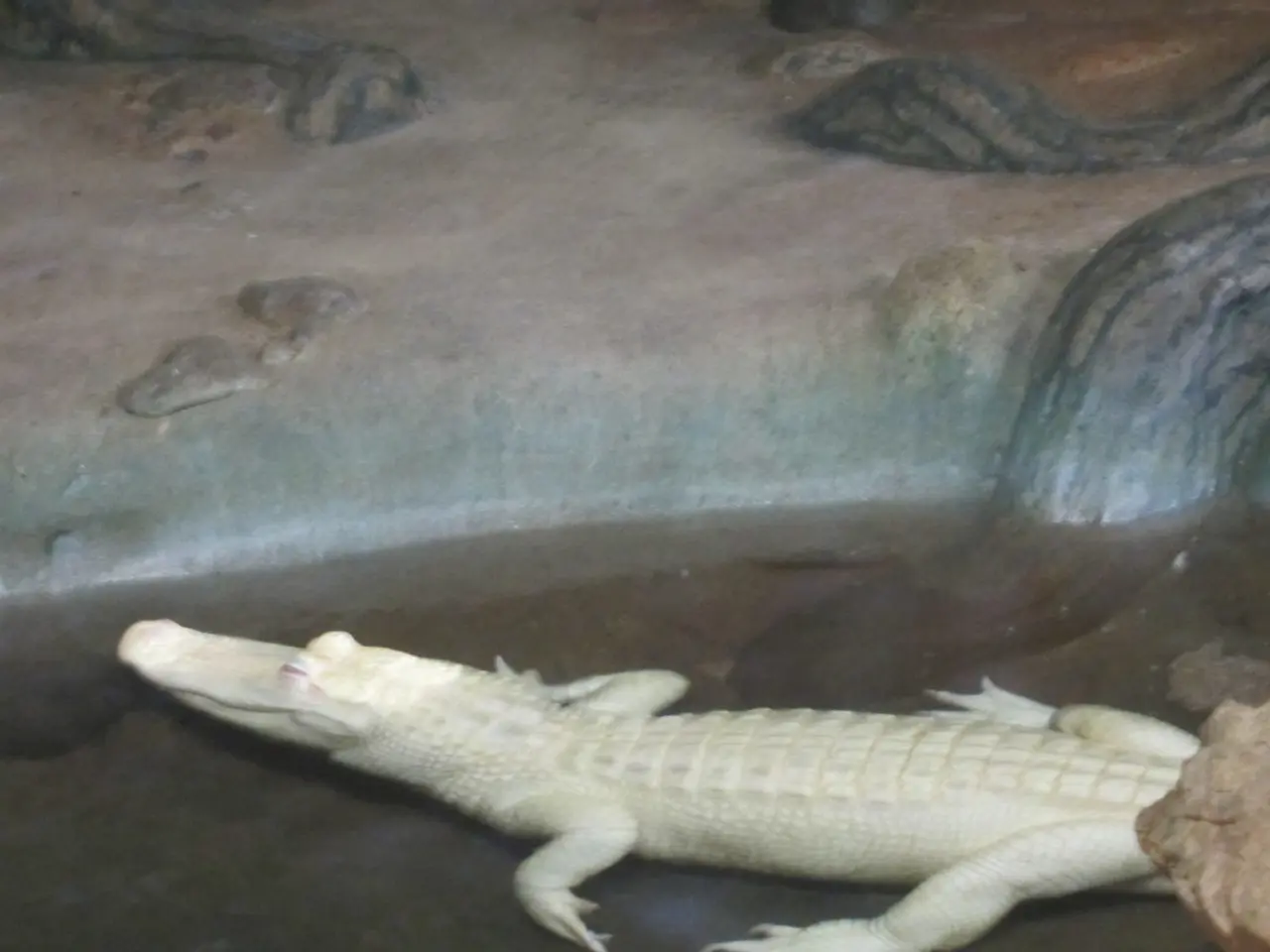Deadly Saltwater Crocodiles Offset Swimming Disadvantage by Surfing Island to Island
In a groundbreaking study, researchers have discovered that saltwater crocodiles, the largest living reptile on Earth, travel vast distances across oceanic islands by "surfing" on ocean currents rather than actively swimming. This behaviour, which compensates for their poor swimming ability, enables them to cover hundreds of kilometers without exerting much energy.
The study, published in 2010, was the first to report the surfing behaviour of estuarine crocodiles. It was conducted over a period of 12 months in Australia's Kennedy River, where researchers collected data on a fleet of 27 adult saltwater crocodiles. The study revealed that these reptiles begin long-distance travel approximately an hour after a tide change, and they hitch a ride on ocean currents in bursts, often traveling 10-kilometer stretches while the surf is favourable.
One of the key findings was the journey of a 3.84-meter male crocodile, who traveled an impressive 590 kilometers to the west coast of Cape York Peninsula in just 25 days. Another crocodile was tracked traveling 411 kilometers in 20 days, also by taking advantage of seasonal current systems in the Torres Strait region.
This surfing behaviour explains how saltwater crocodiles have been able to colonize widely separated islands in the Indian and Pacific Oceans, despite their physical swimming limitations. The estuarine crocodile occurs as island populations throughout these oceans, and regular mixing between these populations likely occurs.
Interestingly, saltwater crocodiles can survive for extended periods without eating or drinking, making these long journeys feasible. Dr. Hamish Campbell, from the University of Queensland, stated in a release that estuarine crocodiles can move long distances by sea by capitalizing on favourable currents.
The study provides an explanation as to how saltwater crocodiles, who aren't the best swimmers, have been successful in occupying many South Pacific islands. This discovery contributes to the theory that crocodilians have crossed major marine barriers during their evolutionary past.
In summary, the saltwater crocodile's ability to surf ocean currents is a crucial adaptation that enables them to bridge marine barriers and disperse across large oceanic distances, compensating for their relatively poor swimming skills. This also contributes to the species’ broad distribution across islands from South Asia to Australasia.
Read also:
- California links 100,000 home storage batteries through its Virtual Power Plant program.
- Tech Conflict Continues: Episode AI - Rebuttal to the Tech Backlash
- Container Tracking and Sustainable Shipping: Cutting Carbon Emissions!
- Uncertainty Surrounds the Transition to Clean Energy: Public Ponders Implications and their Role in the Change








